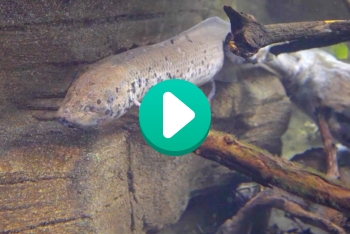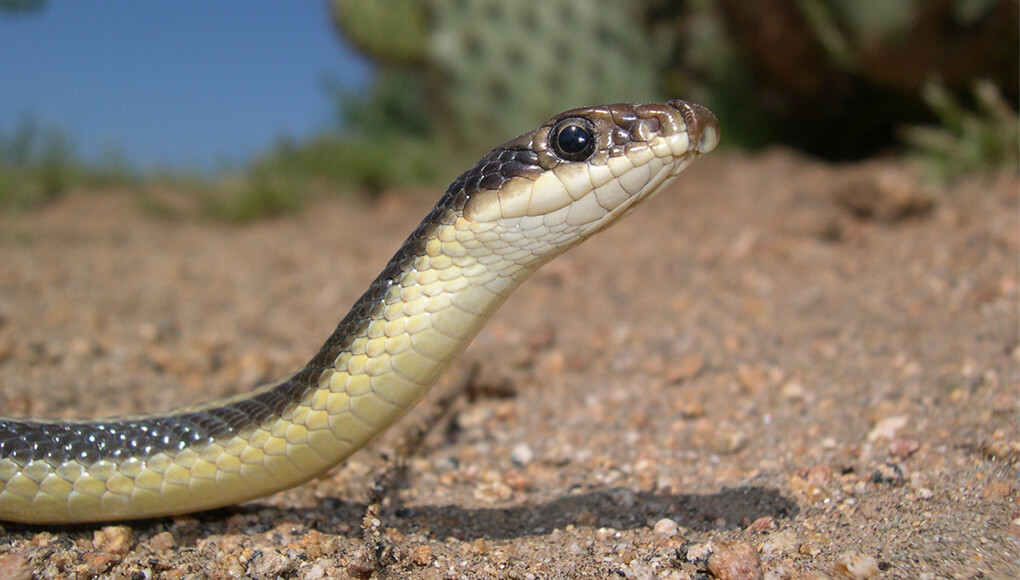
Studying a secretive snake

In our own backyard
The San Diego Zoo Safari Park is big—about 1,800 acres. Besides giraffes, rhinos, and condors, we’ve set aside 800 acres as a preserve. Our scientists use that area to study native plants and wildlife, and take steps to help them. One species we’re focused on is the coastal patch-nosed snake.
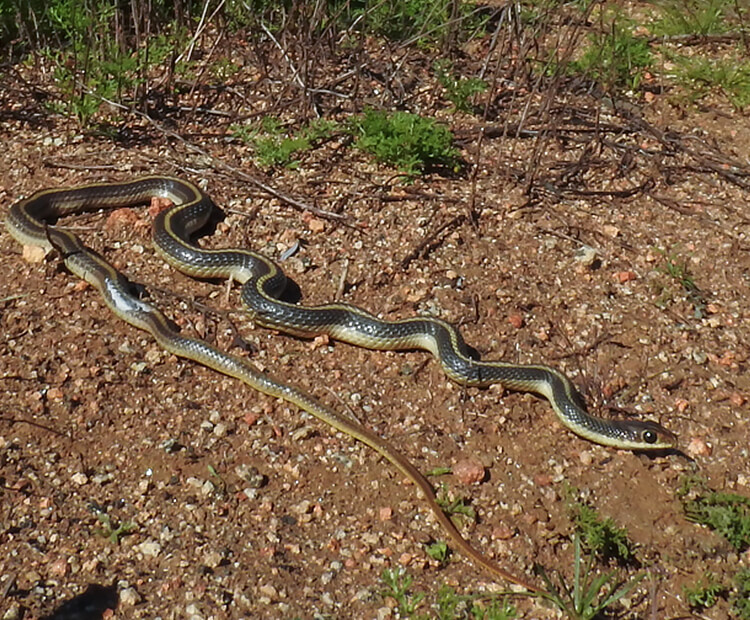
Ready to dig
This snake is named for the peculiar “patch”—a special, hard scale on the front of its snout. It is believed the patch is used like a shovel to dig up lizards and their eggs, which these snakes eat. They might also use it to dig into mouse burrows to find a different kind of meal.
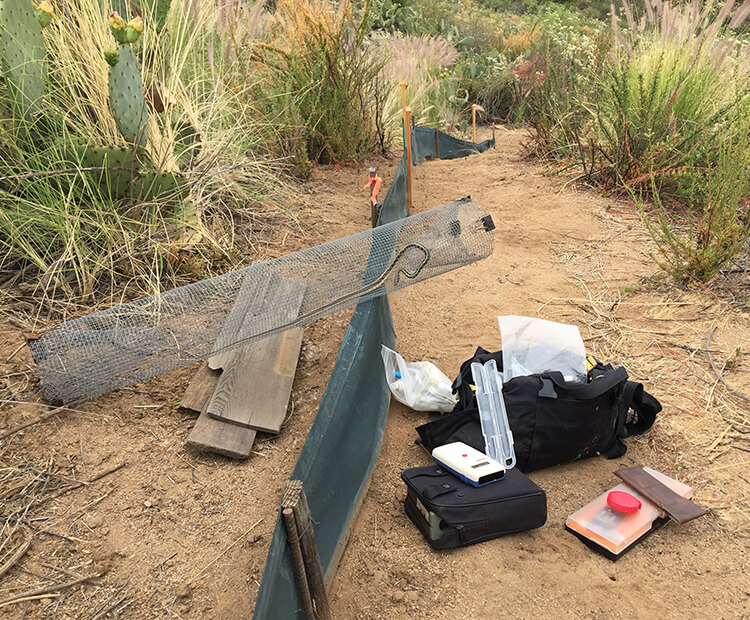
Have we met?
Studying patch-nosed snakes is tricky, because they are not often seen. When our wildlife care specialists find one, they check to see if it has been marked by us before. If it has, they take new measurements and note where the snake was found. If it’s a new snake to us, our scientists gently and carefully insert a transponder under the snake’s skin. The next time the snake is found, it can be scanned. It’s the same idea as microchipping your dog or cat.
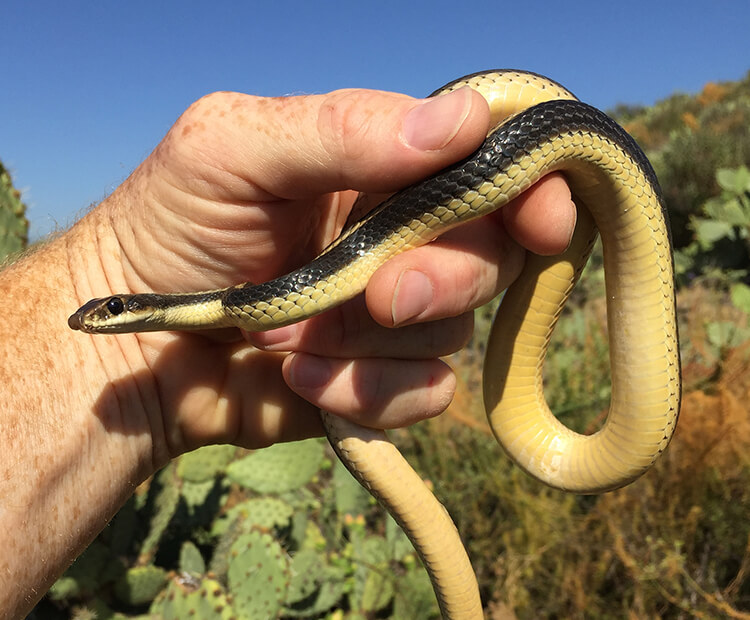
Finding answers
Because this snake is so secretive, we are learning more about it, like how fast it grows, what it needs in a habitat, and how many there are in our preserve. One year, when we had a drought, the scientists only found one snake! The next year, after a good amount of rain, 11 more snakes were found in just a few months. What can researchers learn from this?

Sharing space
We’re happy knowing that these special, rare snakes are making themselves at home in a habitat we protect for them. And we’re even happier to be getting to know them better. Do you know what kinds of wildlife live in your neighborhood?



